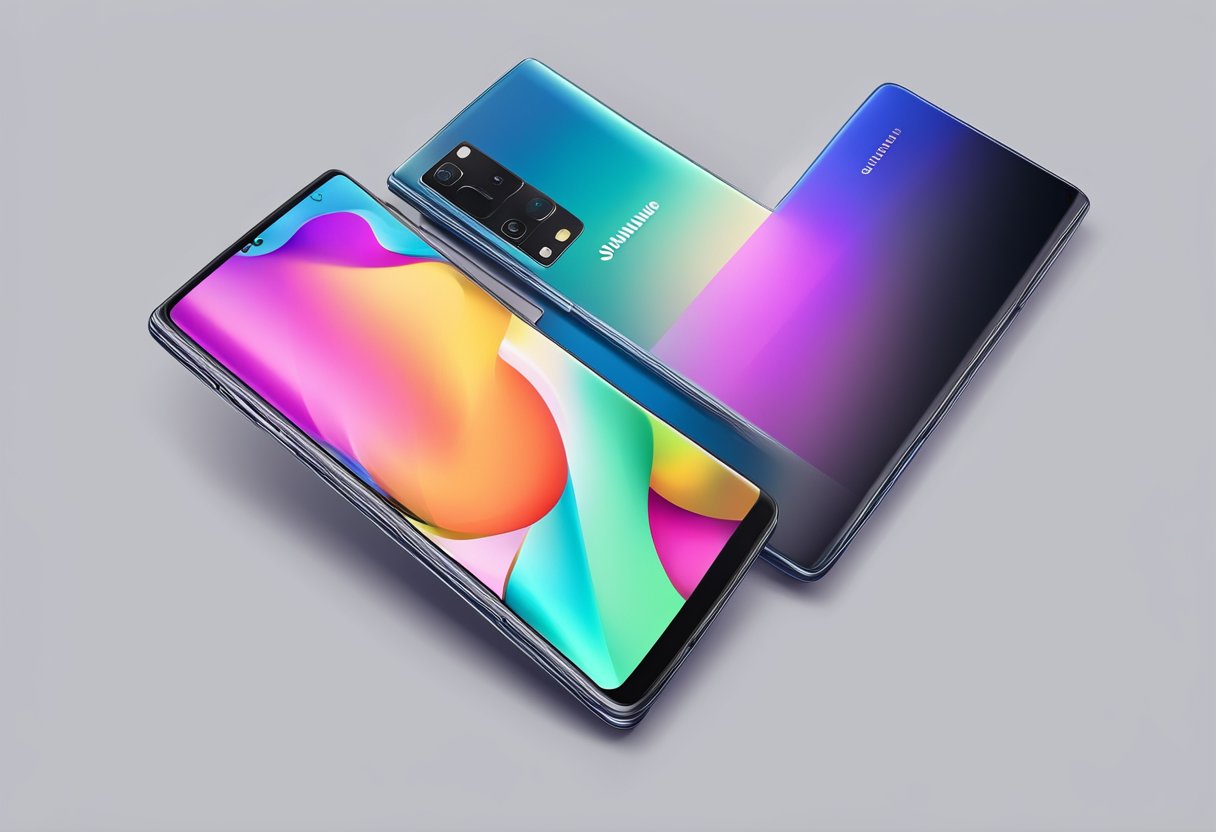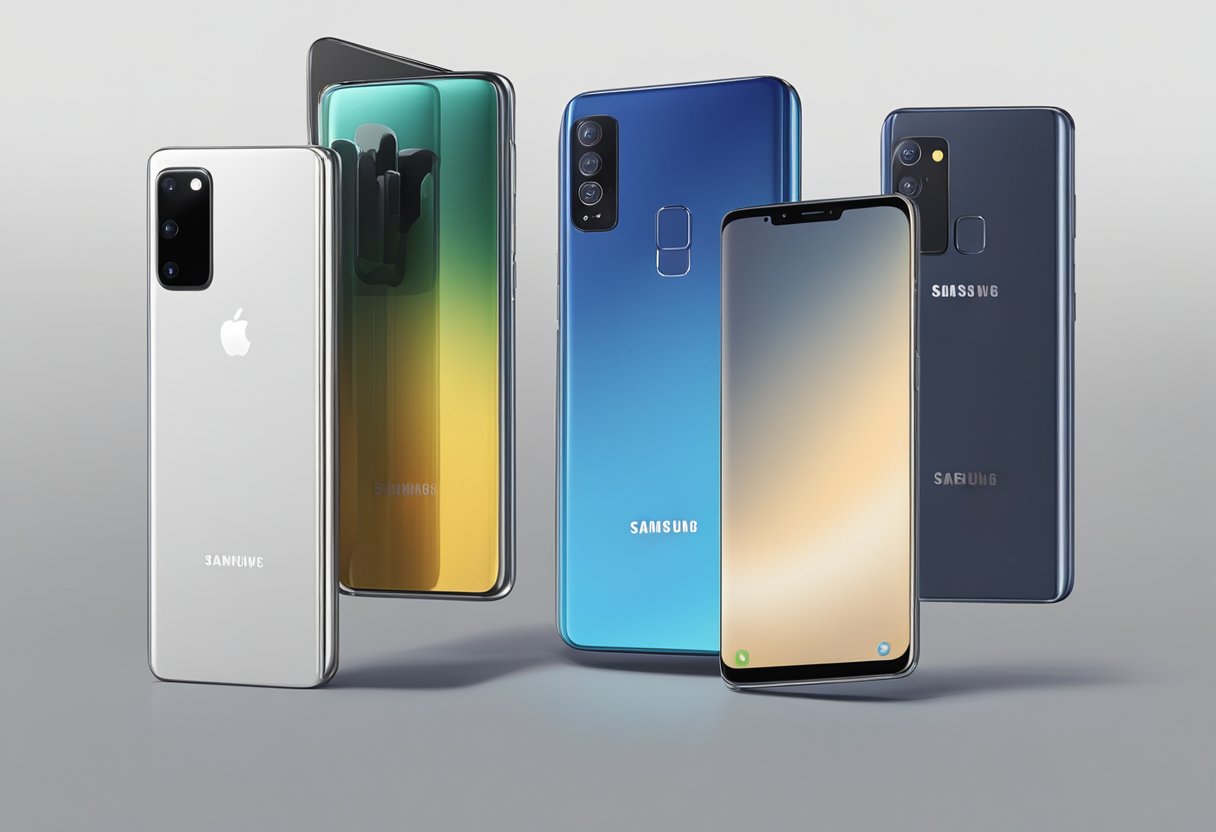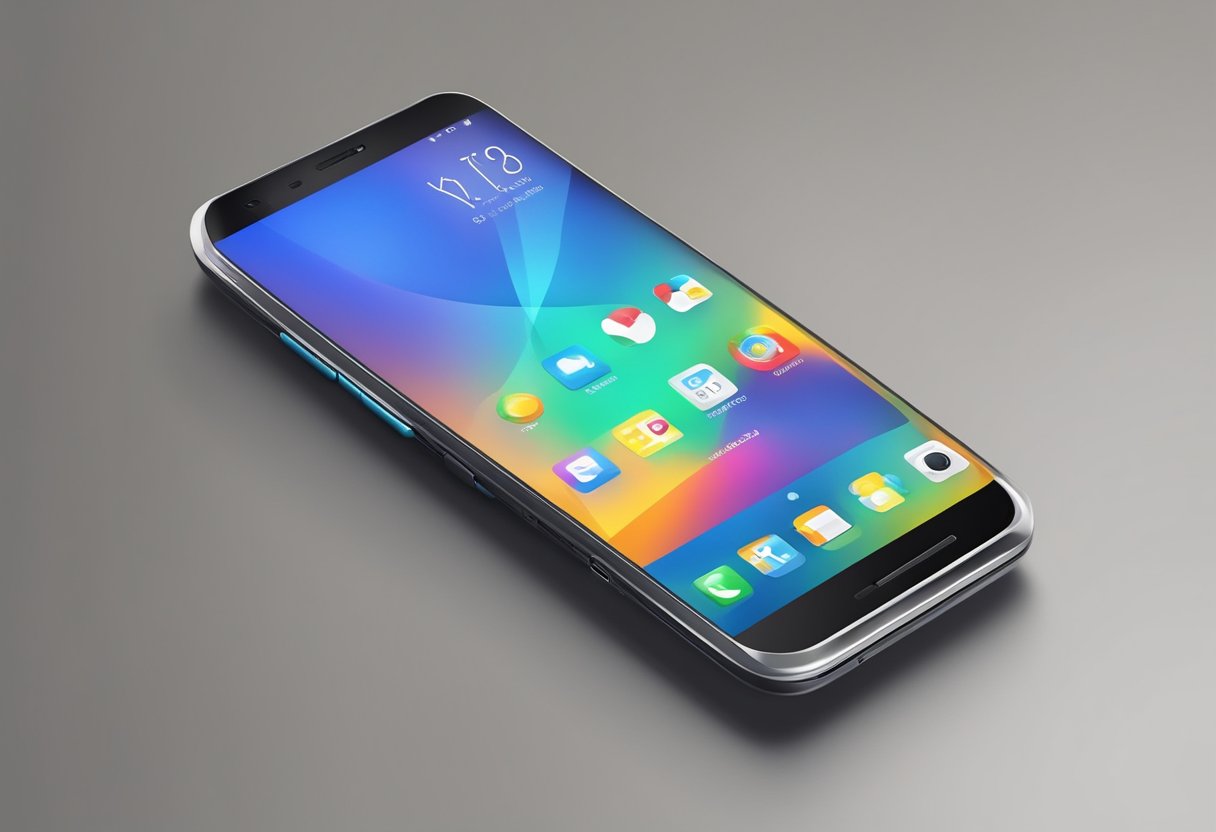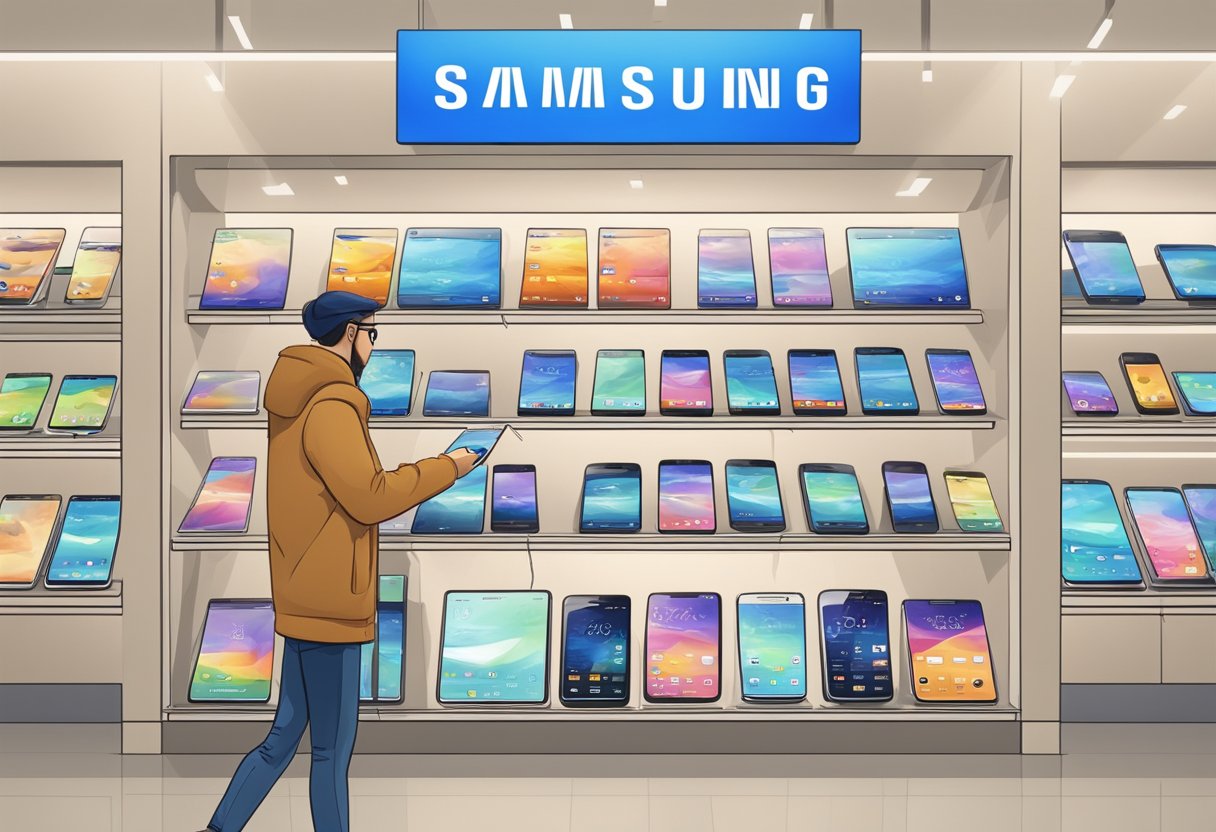Samsung and Apple are two of the biggest names in the smartphone industry, with millions of users around the world. While these two companies are fierce competitors, many people wonder if there is any overlap between them. One question that often comes up is, “Does Samsung make iPhones?”

The answer to this question is not a simple one. While Samsung does not make iPhones in their entirety, they do supply some of the components that are used in the production of Apple’s iconic smartphone. For example, Samsung is known to supply screens, chips, and even RAM for some iPhone models. In fact, according to Display Supply Chain Consultants CEO Ross Young, Samsung supplied 82% of all iPhone 14 displays, with LG supplying 12% and BOE supplying 6% source.
Despite this partnership, Samsung and Apple are still fierce competitors in the smartphone market. Apple has even been working to reduce its reliance on Samsung by seeking out alternative suppliers for some components. Nonetheless, the fact remains that Samsung has played a significant role in the production of iPhones, even if they are not the sole manufacturer.
Samsung and Apple Market Overview

Smartphone Market Dynamics
The smartphone market is highly competitive and dominated by two major players, Samsung and Apple. Samsung, a South Korean multinational conglomerate, is the world’s largest producer of Android phones, while Apple, an American multinational technology company, is the world’s largest producer of iPhones. In recent years, Apple has overtaken Samsung as the world’s largest smartphone manufacturer by volume, thanks to the popularity of its latest iPhone models.
The latest Samsung Galaxy S series has been well received by consumers, with the Galaxy S21 being the latest addition to the series. However, despite the popularity of the Galaxy S series, Samsung has struggled to compete with Apple in terms of brand loyalty and ecosystem. Apple’s ecosystem, which includes the iPhone, iPad, Mac, and Apple Watch, has been a major factor in its success, as it creates a seamless user experience across all devices.
Brand Ecosystems
Apple’s brand ecosystem is one of the strongest in the industry, with customers often owning multiple Apple devices. This is due to the seamless integration between devices and the ability to easily transfer data between them. Samsung has tried to create a similar ecosystem with its Galaxy devices, but has not been as successful due to the fragmentation of the Android platform.
In terms of market share, Apple’s iPhone holds a significant share of the smartphone market, while Samsung’s Galaxy series holds a slightly smaller share. However, Samsung still dominates the Android phone market, with its Galaxy devices being the most popular Android phones in the world.
Overall, while Samsung and Apple are both major players in the smartphone market, they have different strengths and weaknesses. Samsung dominates the Android phone market and has a strong presence in the smartphone market, while Apple has a strong brand ecosystem and is the world’s largest producer of iPhones.
Product Design and Features

Samsung and Apple are two of the biggest smartphone manufacturers in the world. While Samsung produces smartphones running on the Android operating system, Apple produces iPhones that run on iOS. Despite the differences in the operating systems, some people may wonder if Samsung has ever made iPhones or if there are any similarities between the two companies’ products. In this section, we will explore the product design and features of Samsung and Apple smartphones.
Display Technology
Samsung is known for its high-quality OLED displays, which are used in its flagship smartphones such as the Galaxy S and Galaxy Note series. OLED displays offer better contrast, deeper blacks, and wider viewing angles compared to traditional LCD displays. On the other hand, Apple uses a mix of OLED and LCD displays in its iPhones. The iPhone 13 Pro and 13 Pro Max use OLED displays, while the iPhone 13 and 13 mini use LCD displays. OLED displays are generally considered to be superior to LCD displays in terms of image quality.
Camera Systems
Both Samsung and Apple smartphones are known for their high-quality camera systems. Samsung’s latest smartphones, such as the Galaxy S21 and S21+, feature a triple-lens camera system that includes a 12-megapixel ultra-wide lens, a 12-megapixel wide-angle lens, and a 64-megapixel telephoto lens. Apple’s latest smartphones, such as the iPhone 13 Pro and 13 Pro Max, also feature a triple-lens camera system that includes a 12-megapixel ultra-wide lens, a 12-megapixel wide-angle lens, and a 12-megapixel telephoto lens. The camera systems on both Samsung and Apple smartphones offer excellent image quality and a variety of features such as night mode, portrait mode, and 8K video recording.
Hardware and Performance
Samsung and Apple use different hardware components in their smartphones. Samsung’s latest smartphones, such as the Galaxy S21 and S21+, are powered by the Snapdragon 888 processor or the Exynos 2100 processor, depending on the region. These processors are paired with either 8GB or 12GB of RAM, depending on the model. Apple’s latest smartphones, such as the iPhone 13 Pro and 13 Pro Max, are powered by the A15 Bionic chip and come with 6GB of RAM. Both Samsung and Apple smartphones offer excellent performance and are capable of running demanding apps and games smoothly.
In terms of battery life, Samsung and Apple smartphones offer similar performance. Samsung’s latest smartphones feature large batteries that can last all day with moderate use. Apple’s latest smartphones also offer all-day battery life, with the iPhone 13 Pro Max offering the longest battery life of any iPhone. Overall, both Samsung and Apple smartphones offer excellent hardware and performance, making them some of the best smartphones on the market.
Operating Systems and Software

Android vs iOS
One of the most significant differences between Samsung and Apple’s phones is the operating system they run. Samsung phones run on Android, while iPhones run on iOS. Android is an open-source operating system, which means that anyone can modify and distribute it. In contrast, iOS is a closed-source operating system, which means that only Apple can modify and distribute it.
Android offers more flexibility and customization options than iOS. Users can customize their home screens, download third-party apps from the Google Play Store, and use widgets. In contrast, iOS has a more streamlined and consistent user experience. Apple’s closed ecosystem allows for better integration between hardware and software, which can result in a smoother user experience.
Security and Updates
One of the most significant concerns for smartphone users is security. Both Android and iOS have their security features, but iOS is generally considered more secure than Android. Apple’s closed ecosystem and strict app review process help prevent malware and other security threats from affecting iPhones.
In contrast, Android’s open-source nature makes it more vulnerable to security threats. However, Google has made significant strides in recent years to improve Android’s security. Android phones receive regular security updates, and Google Play Protect scans apps for malware and other security threats.
In terms of software updates, Apple is known for providing regular updates for its iPhones. Apple provides software updates for several years after a phone’s release, which helps ensure that iPhones remain up-to-date and secure. In contrast, Android phones receive updates at different times, depending on the manufacturer and carrier. Some Android phones may receive updates for several years, while others may only receive updates for a year or two.
Overall, both Android and iOS have their strengths and weaknesses when it comes to operating systems and software. It ultimately comes down to personal preference and priorities.
Innovation and Technology Advances

Samsung and Apple are two of the biggest players in the smartphone industry. While Apple designs and manufactures its own iPhones, Samsung is known for its Galaxy line of smartphones. However, rumors and speculation have persisted over the years about Samsung’s involvement in the production of iPhones.
5G and Connectivity
One of the areas where Samsung has made significant strides in recent years is in 5G technology. The company has been at the forefront of developing and deploying 5G networks and devices, and its Galaxy smartphones are some of the first to feature 5G connectivity. With the advent of 5G, users can expect faster download and upload speeds, lower latency, and improved overall performance.
AI and Computational Photography
Samsung has also been investing heavily in artificial intelligence (AI) and computational photography. Its Galaxy smartphones feature advanced camera systems that use AI to automatically adjust settings based on the scene and lighting conditions. This technology allows users to take better photos and videos without having to manually adjust settings.
In addition, Samsung’s Galaxy smartphones also feature advanced video recording capabilities. The devices can record high-quality video in 4K resolution, and some models even support 8K recording. With such high-quality video recording capabilities, users can capture and share their memories in stunning detail.
Overall, Samsung has made significant strides in innovation and technology advances, particularly in areas such as 5G connectivity, AI, and computational photography. While the company may not manufacture iPhones, its contributions to the smartphone industry cannot be ignored.
Pricing and Consumer Choices

Samsung and Apple offer a wide range of smartphones to cater to different consumer needs and budgets. The pricing of the smartphones varies depending on the model and features. In this section, we will take a closer look at the pricing and consumer choices available for Samsung and Apple smartphones.
Flagship Models
The latest flagship models from Samsung and Apple are the Galaxy S23 Ultra and iPhone 14, respectively. Both models come with the latest features and technologies, and are priced at a premium. The Galaxy S23 Ultra starts at around $1,199, while the iPhone 14 starts at around $999.
The Galaxy S23 Ultra boasts a 6.8-inch Dynamic AMOLED display, a 108MP camera, and 5G connectivity. On the other hand, the iPhone 14 features a 6.1-inch Super Retina XDR display, a 12MP camera, and 5G connectivity. Both models offer top-of-the-line performance and features, making them ideal choices for tech enthusiasts and power users.
Mid-Range and Budget Options
Samsung and Apple also offer mid-range and budget options for consumers who do not want to spend a premium on a smartphone. Samsung’s mid-range and budget options include the Galaxy A series, while Apple’s mid-range and budget options include the iPhone 13 and iPhone 12.
The Galaxy A series offers a range of models with varying features and price points. For instance, the Galaxy A22 starts at around $199 and features a 6.4-inch Super AMOLED display, a 48MP camera, and 5G connectivity. On the other hand, the Galaxy A52 starts at around $399 and features a 6.5-inch Super AMOLED display, a 64MP camera, and 5G connectivity.
Apple’s mid-range and budget options, the iPhone 13 and iPhone 12, are also priced competitively. The iPhone 13 starts at around $699 and features a 6.1-inch Super Retina XDR display, a dual-camera setup, and 5G connectivity. The iPhone 12, on the other hand, starts at around $599 and features a 6.1-inch Super Retina XDR display, a dual-camera setup, and 5G connectivity.
In conclusion, Samsung and Apple offer a wide range of smartphones to cater to different consumer needs and budgets. Whether you are looking for a premium flagship model or a mid-range or budget option, both companies have something to offer.
